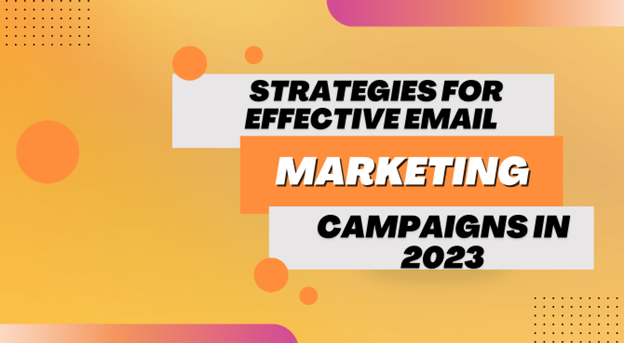Are you tired of creating content that seems to fall flat? Do you want to build a solid foundation for your content strategy, but don’t know where to start? Look no further! In this blog post, we will guide you through the process of developing a strong content creation strategy framework. By following our tips and best practices, you’ll be able to create engaging and effective content that resonates with your audience and drives results. So let’s get started on building a sturdy foundation for your brand’s success!
What is a content strategy framework?
Your content strategy should be the foundation of your content marketing efforts. It will help you define your goals, audience, and approach, and it will keep your content focused and on track. While defining content strategy framework you must think about audience strategy framework.
Before you can start putting together your content strategy, you need to understand what it is and why it’s important. Content strategy is the process of planning, creating, managing, and measuring your content to achieve your business goals. It’s a key part of any successful marketing or communications plan.
Why is content strategy important? In today’s noisy online world, a well-thought-out content strategy can help you cut through the clutter and reach your target audience. Good content strategies are also essential for effective search engine optimization (SEO) and for building relationships with customers and other stakeholders.
Now that you know what content strategy is and why it matters, it’s time to start putting together your own framework. Here are some key elements to consider:
- Define Your Goals
What do you want to achieve with your content? Are you looking to drive traffic to your website? Increase brand awareness? Generate leads? Convert prospects into customers? Keep existing customers engaged? Every piece of content you create should be aligned with one or more of your business goals.
- Know Your Audience
Who are you creating content for? What needs do they have? What are their interests? What motivates them? The better you understand your audience, the better you can tailor your content to meet their needs and wants.
- Choose the Right Platforms
Where will you publish your content? Will you use social media, blogs, or other websites? It’s important to choose platforms that your target audience is already using and that are appropriate for the type of content you’re creating.
- Develop a Content Calendar
Having an organized plan for content creation will help you stay on track and ensure that you’re consistently publishing quality content. A content calendar should include topics, due dates, publishing dates, and more.
- Measure Your Results
Your content strategy isn’t complete without measuring its results. Track metrics such as website traffic, leads generated, conversions, social shares, and engagement to see if your content is achieving the desired outcomes. You can also use this data to refine your approach going forward.
Establishing Your Goals and Objectives – content strategy framework
To build a strong foundation for your content strategy, it is important to first establish your goals and objectives. What are you hoping to achieve with your content? Are you looking to drive traffic to your website? Increase brand awareness?Engage with your target audience?
Once you have established your goals, you can begin to develop your objectives. What steps do you need to take in order to achieve your goals? For example, if you are looking to drive traffic to your website, your objectives may include creating high-quality content that will rank well in search engines and promoting that content through social media and other channels.
Developing a clear and concise content strategy framework will help ensure that your content is aligned with your business goals and objectives. By taking the time to plan out your strategy, you can avoid wasted time and effort down the road.
Identifying Your Audience
As a business owner, you can’t be everything to everyone – and that’s okay! In order to create content that resonates with your target audience, you first need to identify who they are. Consider the following questions when defining your audience:
- Who are your current customers?
- Who is your ideal customer?
- What demographics do they fall into (e.g. age, gender, location)?
- What interests do they have?
- What needs do they have that your product or service can address?
Once you have a good understanding of who your target audience is, you can start to develop content that appeals to them. Keep in mind that your audience may change over time, so it’s important to regularly review and update your content strategy accordingly.
Research and Analysis
Content is the bread and butter of any digital marketing strategy. It is the foundation on which you can build an effective inbound marketing strategy that will attract, engage, and convert your target audience.
But before you can start creating content, you need to have a clear understanding of your content strategy framework. This will help you develop a roadmap for your content creation and ensure that all your content is aligned with your business goals.
So, what exactly is a content strategy framework? In simple terms, it is a set of guidelines that will help you create consistent, high-quality content that resonates with your target audience.
Creating the content strategy framework
When it comes to developing your content strategy framework, there are a few key elements that you need to keep in mind. First, you need to be clear about your goals and objectives. What are you hoping to achieve with your content? Once you know your goals, you can begin to develop the strategy itself. This will involve creating a editorial calendar, mapping out content themes and topics, and deciding on the best format and channels for delivering your content.
As you develop your framework, it’s important to keep in mind who your target audience is and what they want to see from you. What kind of information are they looking for? How can you deliver it in a way that is engaging and useful for them? Keep these questions in mind as you finalize your strategy.
Once you have all of the pieces in place, it’s time to start executing on your plan. Begin creating high-quality content that aligns with your strategy. Be sure to promote it through the appropriate channels and track its performance so that you can continue to optimize and improve over time. With a strong foundation in place, you’ll be well on your way to achieving success with your content marketing efforts.
Developing a Distribution Plan
Developing a distribution plan is essential to content marketing success. By understanding which channels will work best for your content and developing a strategy for each, you can ensure that your content reaches your target audience and drives results.
There are a number of factors to consider when developing your distribution plan, including:
- Your target audience: Who are you trying to reach with your content?
- Your objectives: What do you hope to achieve with your content?
- Your budget: How much are you willing to spend on paid promotion?
- Your resources: What internal resources do you have available for promoting your content?
- Your timeline: When do you need results?
Once you’ve answered these questions, you can start to develop a distribution strategy for each channel. Here are a few tips to get you started:
- Social media: Utilize social media platforms like Twitter, Facebook, and LinkedIn to share your content and build an engaged community. Use hashtags, post regularly, and interact with other users.
- Email newsletters: Include links to your latest blog posts or articles in your email newsletters and encourage subscribers to share them with their network.
- Paid advertising: Invest in targeted paid advertising on social media or Google AdWords to reach new audiences with your content.
- Content syndication: Work with partner websites or publications to syndicate your content and reach a larger audience.
- Influencer outreach: Reach out to influencers in your industry and ask them to share, comment on, or review your content.
By following these steps and creating a plan for each channel, you can ensure that your content reaches the right people at the right time and drives results. Good luck!
Measuring Performance
When it comes to measuring the performance of your content strategy, there are a few key metrics you should keep in mind. First, take a look at how much traffic your website or blog is receiving. This will give you an idea of how many people are seeing your content. Second, take a look at the engagement levels of your audience. Are people commenting on your blog posts or sharing them on social media? This will give you an idea of how well your content is resonating with your audience. Finally, take a look at the conversion rates of your content. If you’re selling products or services, are people buying what you’re offering? These are just a few of the most important metrics to keep in mind when measuring the performance of your content strategy.
Frequently Asked Questions (FAQs)
A content strategy framework is a plan or model that helps organizations to create, publish, and manage content effectively. It outlines the goals, target audience, messaging, and distribution channels for content creation.
A content strategy framework ensures that your content is aligned with your business goals, target audience, and brand voice. It also helps you to create high-quality content that is useful and engaging for your audience.
The key components of a content strategy framework include a mission statement, target audience, brand voice, messaging, content formats, distribution channels, content calendar, and metrics for measuring success.
To create a content strategy framework, start by defining your business goals, target audience, and brand voice. Then, create a messaging framework, select content formats, and choose distribution channels. Finally, create a content calendar and establish metrics for measuring success.
Some common mistakes to avoid when creating a content strategy framework include not defining clear goals, failing to research your target audience, creating content that is too promotional, neglecting to establish a consistent brand voice, and failing to measure the success of your content.
To optimize your content strategy framework for SEO, conduct keyword research and incorporate target keywords into your content. Ensure that your content is well-structured, with clear headings and subheadings. Also, use descriptive meta titles and descriptions to help your content appear in search results.
To optimize your content for rich snippets, provide clear and concise answers to common questions related to your topic. Use schema markup to provide structured data to search engines. Also, include relevant images and videos to enhance the user experience.
To measure the success of your content strategy framework, track metrics such as website traffic, engagement rates, social media shares, and conversions. Use analytics tools to track these metrics and adjust your content strategy as needed.
You should update your content strategy framework on a regular basis, at least once per year. However, you may need to make updates more frequently if your business goals or target audience change, or if you notice that your content is not performing as well as it should.
Some best practices for creating a successful content strategy framework include defining clear goals, conducting thorough research on your target audience, creating high-quality and engaging content, optimizing your content for SEO and rich snippets, and measuring the success of your content.
Conclusion
Developing a content strategy framework is essential for any successful business. It provides the foundation that you need to create and execute effective content strategies. By having an established set of goals, objectives, audiences and metrics in place, you can ensure that all your content efforts are focused on achieving desired outcomes. With careful planning and research, you can develop a robust framework that will serve as the cornerstone of your digital marketing success.




